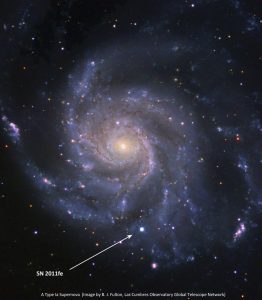Supernovae are bright, cosmic explosions which often outshine their host galaxy. Over recent years dedicated surveys have identified a variety of different  supernova classifications, leading to what is now known as the “supernova zoo”. In order to identify the star that exploded, the progenitor star, we use existing imaging from telescope archives to try and match the position of the supernova with a specific star, however this direct-detection method has not proved as effective and the source of many of these cosmic explosions is still unknown. We can investigate the environments of supernova and massive-star, since massive stars have very short lifetimes they should not move very far from where they are born and so if they are indeed progenitors of supernova then the properties of each environment should be the same. Also, by undertaking narrow-band imaging surveys we can build up a catalogue of evolved massive stars, thought to be the progenitor of at least 2 different supernova subtypes which can then be referred to for any future supernovae which will provide us direct confirmation of this massive star-supernova connection.
supernova classifications, leading to what is now known as the “supernova zoo”. In order to identify the star that exploded, the progenitor star, we use existing imaging from telescope archives to try and match the position of the supernova with a specific star, however this direct-detection method has not proved as effective and the source of many of these cosmic explosions is still unknown. We can investigate the environments of supernova and massive-star, since massive stars have very short lifetimes they should not move very far from where they are born and so if they are indeed progenitors of supernova then the properties of each environment should be the same. Also, by undertaking narrow-band imaging surveys we can build up a catalogue of evolved massive stars, thought to be the progenitor of at least 2 different supernova subtypes which can then be referred to for any future supernovae which will provide us direct confirmation of this massive star-supernova connection.
Lead researcher: Dr Joanne Pledger
MSc student: Amelia Sharp
Collaborator: Rudi Ganss
